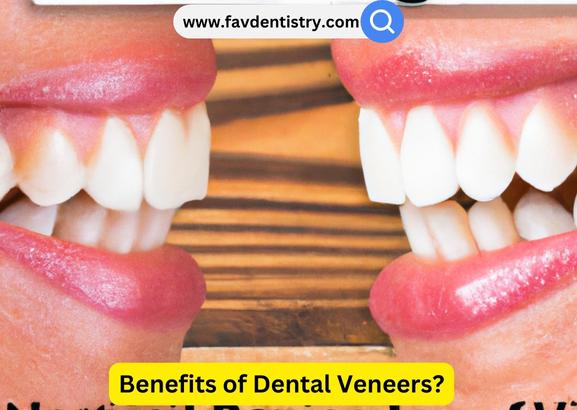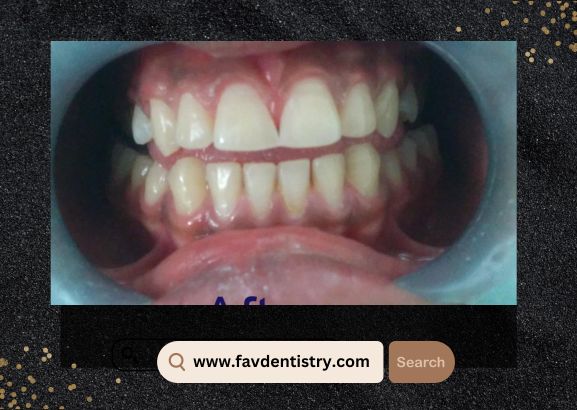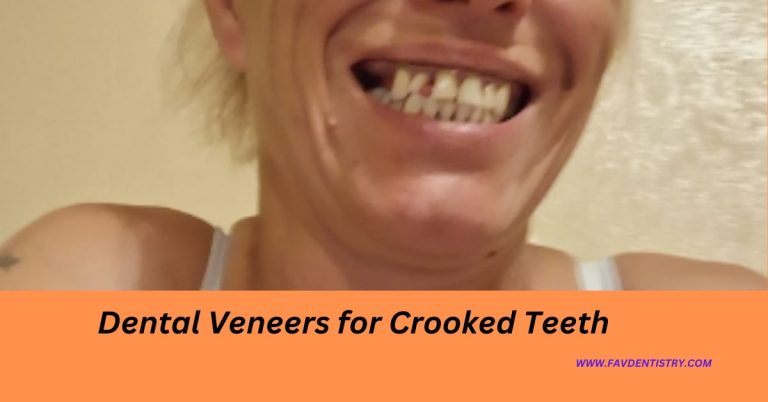Last Updated on 3 weeks by DR. ALBIN SIPES
Yes, veneers can be removed and replaced.
Understanding Veneers: What Are They And How Do They Work?
Are you considering getting veneers for a flawless smile? Veneers are a popular cosmetic dentistry solution that can transform your teeth and enhance your confidence. We will delve into the definition, purpose, types, and application process of veneers. So, let’s get started!
Definition Of Veneers
Veneers are ultra-thin, custom-made shells that are bonded to the front surface of your teeth. Made from materials like porcelain or composite resin, veneers are designed to mimic the appearance of natural teeth and improve their shape, size, color, or alignment.
These versatile dental restorations can effectively mask dental imperfections and give you a smile you’ve always desired.
Explanation Of The Purpose Of Veneers
Veneers serve multiple purposes in dentistry, including:
- Enhancing the aesthetics of your smile by covering stained or discolored teeth.
- Correcting the appearance of chipped, cracked, or broken teeth.
- Closing gaps between teeth and improving tooth alignment without the need for orthodontic treatment.
- Reshaping irregularly shaped teeth for a more harmonious smile.
Different Types Of Veneers Available
When it comes to veneers, you have a choice between two popular types:
- Porcelain veneers: These highly durable and natural-looking veneers are known for their stain-resistant properties. Porcelain veneers are custom-made in a dental laboratory and require multiple visits to your dentist for placement. They tend to be more expensive but can last up to 15 years with proper care.
- Composite resin veneers: These veneers are directly applied to your teeth in a single dental visit. Your dentist will carefully sculpt and bond the composite material onto your teeth, achieving instant transformation. While composite resin veneers are more affordable, they have a shorter lifespan of around 5-7 years and may be more prone to staining.
How Veneers Are Applied To Teeth
The application process for veneers typically involves the following steps:
- Consultation and treatment planning: During your initial visit, your dentist will examine your teeth, discuss your goals, and determine if veneers are a suitable option for you. X-rays and impressions may be taken to create a personalized treatment plan.
- Tooth preparation: A small amount of enamel is usually shaved off the surface of your teeth to accommodate the veneers. This ensures a seamless fit and natural appearance.
- Impression taking: An impression of your teeth is made and sent to the dental laboratory, where your custom veneers will be fabricated.
- Temporary veneers: While waiting for your permanent veneers to be ready, temporary veneers may be placed to protect your teeth.
- Bonding: Once your permanent veneers are ready, they are carefully bonded to your teeth using a strong dental adhesive. The veneers are then polished to achieve a beautiful and natural-looking finish.
Revealing a stunning smile with veneers is a simple and effective way to boost your self-confidence. With their versatility and long-lasting results, veneers can help you achieve the smile makeover you’ve always dreamed of.
The Lifespan Of Veneers: How Long Do They Typically Last?
Veneers are a popular cosmetic dental treatment that can transform the appearance of your teeth. However, like any dental procedure, they are not permanent and may need to be replaced over time. In this section, we will explore the factors that determine the lifespan of veneers, the average lifespan, signs that indicate it’s time for replacement, and the importance of regular dental check-ups for maintaining veneers.
Factors That Determine The Lifespan Of Veneers:
- Oral hygiene: Good oral hygiene practices, such as brushing and flossing regularly, can significantly impact the lifespan of your veneers.
- Eating habits: Certain foods and drinks, such as hard candies and acidic beverages, can potentially damage your veneers and reduce their lifespan.
- Teeth grinding: Grinding or clenching your teeth can put excessive pressure on your veneers, causing them to chip or crack.
- Bite alignment: If your bite is not properly aligned, it can place undue stress on your veneers, leading to potential damage and a shorter lifespan.
- Material quality: The quality of the materials used for your veneers can also play a role in their longevity. Higher-quality materials may have a longer lifespan.
Average Lifespan Of Veneers:
- On average, veneers can last anywhere from 10 to 15 years.
- However, with proper care and maintenance, some veneers have been known to last even longer.
- It’s important to note that individual results may vary, as the lifespan of veneers depends on various factors and personal habits.
Signs That Indicate It’S Time For Replacement:
- Discoloration: Over time, veneers may start to discolor or stain, which can affect their appearance.
- Chipping or cracking: Veneers can chip or crack due to everyday wear and tear or accidental trauma.
- Sensitivity: If you experience increased sensitivity or discomfort around your veneers, it could be a sign that they need to be replaced.
- Uneven or worn edges: Veneers with uneven or worn edges may need to be replaced to maintain a natural and uniform smile.
Importance Of Regular Dental Check-Ups For Maintaining Veneers:
- Regular dental check-ups allow your dentist to monitor the condition of your veneers and detect any early signs of damage or wear.
- Professional cleaning and polishing can help maintain the appearance and longevity of your veneers.
- Your dentist can provide guidance on proper oral hygiene practices and recommend any necessary adjustments or replacements to keep your veneers looking their best.
While veneers can enhance the appearance of your smile, they are not permanent and may require replacement over time. Understanding the factors that determine the lifespan of veneers, recognizing signs that indicate replacement is necessary, and prioritizing regular dental check-ups can help you maintain your veneers and enjoy a beautiful smile for years to come.
Replacing Veneers: What To Expect During The Process
Are you considering getting veneers but wondering if they can be removed and replaced if needed? The good news is that yes, veneers can be replaced. Whether it’s because your old veneers are damaged or you simply want a new and improved smile, the process of replacing veneers is quite straightforward.
We will walk you through what to expect during the process, from the initial consultation with a dentist to the placement of the new veneers. So let’s dive in!
Initial Consultation With A Dentist
Before embarking on the journey of replacing your veneers, it’s essential to schedule an initial consultation with a qualified dentist. During this consultation, you can discuss your concerns, desired changes, and expectations. The dentist will examine your existing veneers, evaluate their condition, and determine whether replacement is necessary.
This is also an opportunity for you to ask any questions you may have about the procedure.
Removing The Old Veneers Safely
Once it is determined that your veneers need to be replaced, the next step is to remove the old ones safely. The dentist will carefully remove the existing veneers, taking great care not to damage your natural teeth underneath. This process may involve using specialized tools to gently lift and detach the veneers.
The dentist will ensure that the removal process is as comfortable as possible for you.
Preparing The Teeth For New Veneers
After the old veneers are removed, the dentist will prepare your teeth for the placement of the new veneers. This typically involves lightly reshaping the tooth enamel to create a suitable surface for the veneers to adhere to. The amount of reshaping necessary will depend on the specific case and the type of veneers being used.
Your dentist will guide you through this process and ensure that your teeth are prepared correctly.
Placing The New Veneers And Ensuring A Perfect Fit
Once the teeth are prepared, it’s time to place the new veneers. The dentist will use dental adhesive to bond the veneers to your teeth, ensuring a secure fit. They will carefully position each veneer to achieve the desired aesthetic outcome and make necessary adjustments as needed.
This step is crucial to ensure that your new veneers look natural and aligned with your existing teeth. The dentist will check your bite and make any necessary final adjustments for optimal comfort and function.
Replacing veneers allows you to enhance or restore your smile, giving you renewed confidence and a fresh start. By following these steps from the initial consultation to the placement of the new veneers, you can expect a seamless process that results in a beautiful smile transformation.
Remember to consult with a qualified dentist to determine the best course of action for your specific needs. Now that you know what to expect, you can confidently take the next steps towards achieving the smile you’ve always wanted.
Alternatives To Veneer Replacement: Exploring Other Options
Are you considering getting veneers but wondering if they can be removed and replaced? Well, you’re not alone. Veneers are a popular cosmetic dental treatment that can enhance your smile and boost your confidence. However, there may come a time when you wish to explore alternative options for various reasons like damage, wear, or changes in preferences.
In this blog post, we will delve into some alternatives to veneer replacement that you should consider. So, let’s dive in!
Dental Bonding As An Alternative To Veneers
- Dental bonding is a less invasive procedure that involves the application of a tooth-colored resin directly onto the affected teeth.
- The resin is then shaped and polished to match the natural appearance and contours of your teeth.
- This option is ideal for minor cosmetic issues such as chips, cracks, or small gaps between teeth.
- Dental bonding is relatively affordable compared to veneers and can be completed in just one visit to the dentist.
Crowns As A Potential Replacement Solution
- If your veneers are extensively damaged or worn, crowns may be a suitable option to consider.
- Crowns, also known as dental caps, are custom-made tooth-shaped restorations that cover the entire visible portion of the tooth.
- They provide strength and protection to weakened teeth, while also improving their aesthetics.
- Crowns can be made from various materials, including porcelain, ceramic, and metal, depending on your specific needs and preferences.
Inlays And Onlays As A Less Invasive Option
- Inlays and onlays are indirect restorations that can be used as an alternative to veneers for mild to moderate tooth decay or damage.
- They are custom-made and are typically created from porcelain or composite resin.
- Inlays are placed within the grooves of a tooth’s chewing surface, while onlays cover a larger portion of the tooth, including one or more cusps.
- The use of inlays and onlays preserves more of your natural tooth structure compared to veneers, making them a less invasive option.
So, which alternative is the right choice for you? Let’s examine the pros and cons of each option:
- Dental bonding:
- Pros: Affordable, quick procedure, minimal alterations to the natural teeth.
- Cons: Not as long-lasting as veneers, susceptible to staining or chipping over time.
- Crowns:
- Pros: Provide strength and protection to damaged teeth, highly durable, can improve aesthetics.
- Cons: More expensive than veneers, requires more tooth preparation.
- Inlays and onlays:
- Pros: Preserve natural tooth structure, durable, can improve tooth aesthetics.
- Cons: May not be suitable for extensive damage or cosmetic issues.
Now that you are aware of the alternatives to veneer replacement, it’s important to consult with your dentist to determine the best option for your specific dental needs. Remember, each case is unique, and what may work for someone else might not be suitable for you.
Caring For Your Veneers: Tips For Prolonging Their Lifespan
Can Veneers Be Removed And Replaced
Have you ever wondered if veneers can be removed and replaced? The answer is yes, veneers can be removed and replaced, but it’s important to take proper care of them to ensure their longevity. In this section, we will discuss some tips and practices to help prolong the lifespan of your veneers.
Practicing Good Oral Hygiene Habits
- Brush your teeth at least twice a day using a soft-bristled toothbrush and non-abrasive toothpaste.
- Floss daily to remove plaque and debris from between your teeth and around the veneers.
- Rinse your mouth with an antiseptic mouthwash to reduce the risk of gum disease and infection.
- Avoid consuming foods and beverages that are high in sugar or acidic, as they can damage the veneers over time.
Avoiding Habits That Can Damage Veneers
- Refrain from biting or chewing on hard objects such as ice, pens, or your fingernails, as this can cause cracks or chips in the veneers.
- Avoid using your teeth as tools to open packages or bottles, as this can also lead to damage.
- If you grind or clench your teeth, consider wearing a nightguard to protect your veneers from excessive force and wear.
Regular Dental Cleanings And Check-Ups
- Visit your dentist regularly for professional cleanings and check-ups. This will allow your dentist to monitor the condition of your veneers and address any issues before they become major problems.
- Your dentist may recommend polishing or reapplying the veneer’s protective coating during these routine appointments.
Using Mouthguards For Added Protection
- If you participate in sports or activities that pose a risk of facial injury, it’s essential to wear a mouthguard. A properly fitted mouthguard can protect your veneers from damage caused by impact or trauma.
By following these simple tips and practicing good oral hygiene, you can keep your veneers in excellent condition for many years to come. Remember, any concerns or issues with your veneers should be addressed by your dentist promptly. So, take care of your veneers and enjoy your beautiful, confident smile!
Frequently Asked Questions For Can Veneers Be Removed And Replaced
Can Veneers Be Removed Without Damaging The Teeth?
Yes, veneers can be removed by a dentist without causing harm to your natural teeth. The process involves carefully removing the veneer using dental tools and techniques. However, it is important to have a professional handle the removal to ensure the preservation of your teeth.
How Long Do Veneers Last Before Replacement?
With proper care and maintenance, veneers can last anywhere from 10 to 15 years before they may need to be replaced. Regular dental check-ups and following good oral hygiene practices are essential for maximizing the lifespan of your veneers.
Can Veneers Be Replaced With Different Ones?
Absolutely! Veneers can be replaced with new ones if you desire a different shape, color, or size. This allows you to achieve your desired smile makeover. Consult with your dentist to discuss your options and find the best solution to meet your dental needs.
Conclusion
As we wrap up this blog post, we have learned that veneers can indeed be removed and replaced if necessary. This procedure may be essential if you are experiencing discomfort or dissatisfaction with your current veneers. However, it is crucial to consult with a dental professional who can determine the best course of action for your unique situation.
By carefully assessing the condition and needs of your veneers, a skilled dentist can safely remove and replace them, delivering improved results that align with your desired aesthetic. Remember to prioritize open communication with your dentist to ensure your expectations are met.
Whether it’s due to damage, wear, or simply wanting a change, the option to remove and replace veneers exists, allowing you to achieve the smile you’ve always dreamed of. Embrace the possibilities and consult with an experienced dentist to determine the best approach for your smile transformation.




